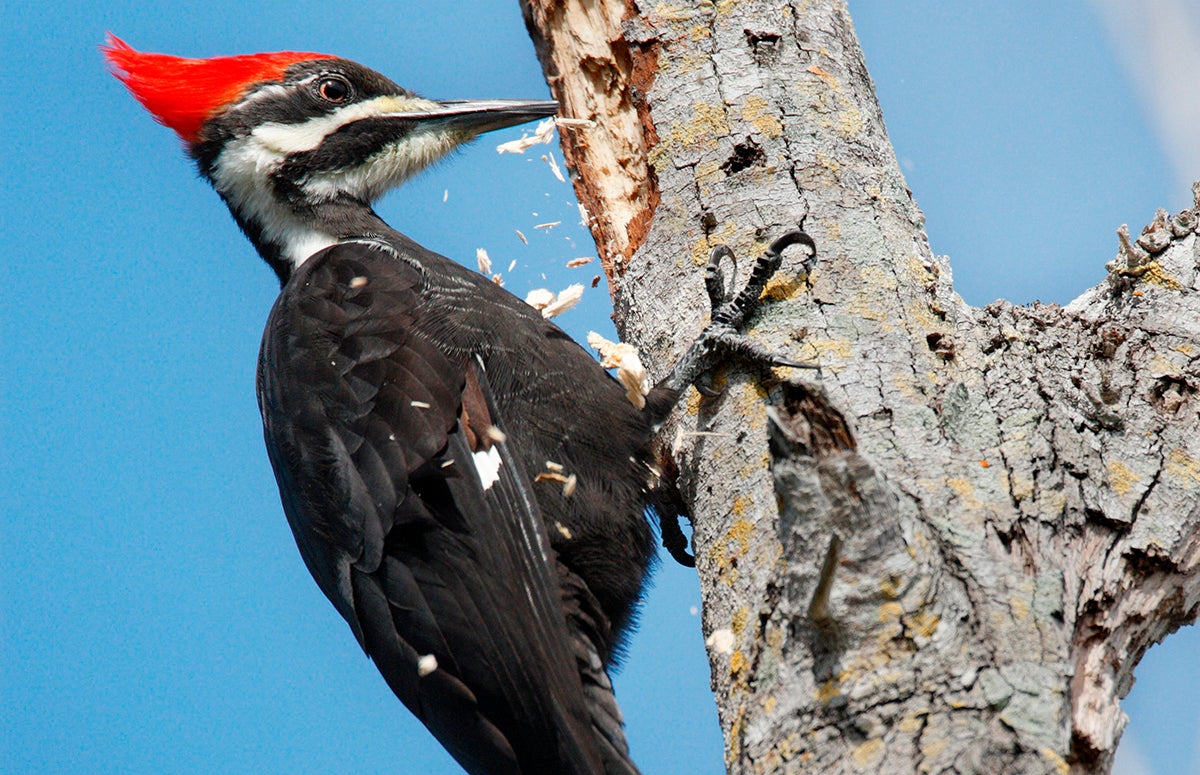Observing Woodpeckers in Florida: Variety Variety and Circulation
Wiki Article
Introducing the Secrets of Woodpeckers: Habits, Environment, and More
Woodpeckers, with their distinct actions and specialized adjustments, have long captivated scientists and nature enthusiasts alike. By uncovering the enigmas bordering woodpeckers' actions and environment options, a deeper understanding of these avian wonders emerges, offering a glance into their remarkable globe.Woodpecker Behavior Insights
In analyzing woodpecker behavior, a remarkable screen of specialized skills and adaptations arises, dropping light on their remarkable eco-friendly specific niche. Woodpeckers, recognized for their unique drumming on trees, possess a selection of behavior qualities that contribute to their survival and success in their environment.Furthermore, woodpeckers show a special feeding behavior identified by their capacity to essence insects from tree bark utilizing their specialized beaks. Their long, barbed tongues aid in recording prey, while their solid neck muscles supply stability and precision throughout pecking movements. This feeding method enables woodpeckers to accessibility surprise insect larvae and extract them with exceptional efficiency.
Habitat Preferences and Option
What aspects affect the environment preferences and choice of woodpeckers? Woodpeckers are extremely versatile birds recognized to occupy different atmospheres worldwide. They do show preferences for certain habitat attributes. One crucial element influencing woodpecker environment option is the schedule of suitable nesting sites. Woodpeckers commonly choose forests with a mix of mature trees that offer adequate possibilities for dental caries excavation. These cavities act as important nesting and roosting websites for woodpeckers and are essential for their breeding success.In addition, woodpeckers reveal a choice for habitats with an abundant supply of food resources. They are largely insectivorous, feeding on beetles, ants, larvae, and other pests located in worn out timber or tree bark. Woodpeckers often tend to prefer woody locations with a diverse insect population to meet their dietary demands.
In addition, the existence of dead or rotting trees is one more crucial consider woodpecker environment option. These trees not just provide food sources yet likewise offer ideal substrate for cavity excavation. Dead trees are essential for the maintenance of healthy woodpecker populaces, as they play an important duty in the woodpeckers' life process and community characteristics.
Feeding Routines and Diet Make-up
Woodpeckers show a specialized feeding behavior concentrated on foraging for bugs within various environments. Their diet mostly contains insects such as beetles, ants, caterpillars, and crawlers, which they locate by tapping on tree bark and paying attention for the sound of motion inside. Woodpeckers use their strong beaks to pierce right into the wood and their long, barbed tongues to remove prey from gaps. In enhancement to insects, woodpeckers additionally eat tree sap, fruits, nuts, and seeds, adding selection to their diet depending upon the period and availability of food resources.The foraging methods of woodpeckers are well-adapted to their arboreal way of life (Woodpeckers in Florida). Their capability to dig deep into timber not just gives them with food but also helps in creating nesting tooth cavities and developing regions. Woodpeckers play an essential function in keeping the wellness of woodlands by regulating insect populaces and aiding in the decay of wood. Understanding their feeding routines and diet plan structure is necessary for preservation initiatives focused on protecting these special and useful birds.
Drumming Seems and Communication
Utilizing rapid drumming audios on numerous surface areas, woodpeckers use a distinct form of interaction to signal territory borders and attract friends. This drumming habits is not just a means of interaction but likewise acts as a means for woodpeckers to develop their presence within a certain area. The intensity, speed, and pattern of the drumming can communicate vital details to various other woodpeckers around.Woodpeckers make use of drumming audios to announce their presence in a region and to alert off prospective trespassers. The loud and repeated nature try this web-site of the drumming serves as go to this web-site a clear signal to other woodpeckers that the location is currently claimed. This aids in lowering disputes and reducing physical battles in between individuals.

Survival Adaptations and Specialized Makeup

Verdict
Finally, woodpeckers display distinct behaviors, such as drumming audios for interaction, and have specialized makeup for survival in their picked habitats. Their feeding habits and diet regimen composition further demonstrate their versatility to various settings. By understanding this these aspects of woodpeckers, scientists and preservationists can better protect and preserve these interesting birds and their environments.Report this wiki page